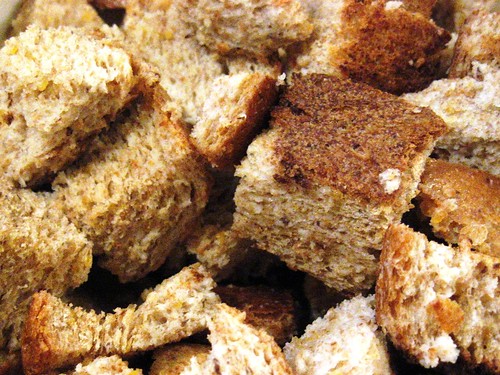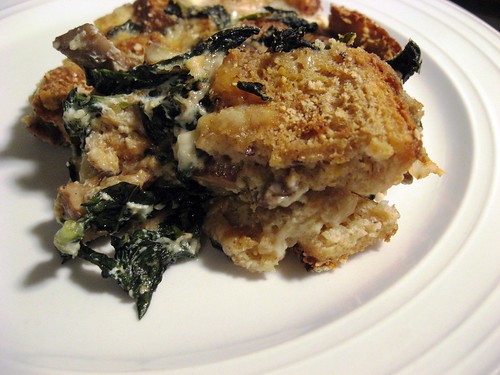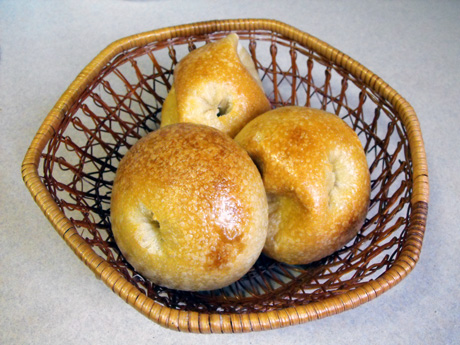So I'm writing a recipe for everyone. Its intended so that anyone, regardless of experience can try to make bread. So far, I've been told that the recipe reads as a technical document. As yet, I'm not sure if thats a good thing or a bad thing.
But please read and tell me if its not detailed, too detailed, or in general too wordy.
--------------------------------------------------------------------------------------------------
4.00 Cups Bread Flour
1.00 Cup Water
4.00 Tbsp Water
1.00 Tbsp Instant Yeast
1.00 Tsp Salt
3.00 Tbsp Melted Butter
Notes:
Bread flour has protein content of between 11-14%, the bag should say which, but all purpose works too (generally the more protein the better)
Instant yeast can be mixed directly in with the flour, bread machine yeast works, but if all you can get is active dry yeast use 1.5 tablespoons, and proof it in water with some sugar first, it should bubble (use some of the water you have measured for the bread).
Water at around body temperature is great, around 80-90F (25-30 C), but any hotter and you risk getting the water too hot for the yeast. Use your finger as a thermometer (finger test!), if you can't tell if the water is hot or cold, use it.
(the instructions to this recipe may seem long, but I am describing everything from start to finish in as much detail as I can, really the process is quite simple)
Procedure:
1.) Melt your butter.
2.) Measure out all your ingredients. Mix the flour and yeast in a large mixing bowl, then mix in the salt.
3.) Pour the water and melted butter into the mixing bowl on top of the dry ingredients.
4.) Using one hands, scoop and fold the ingredients in the bowl; with the other hand continuously turn the bowl.
After a few minutes the dough will come together into a sticky mass.
5.) Turn the dough out onto a table and knead the dough by stretching it away from you and folding it towards you.
6.) Seal the fold by pushing the dough against the table.
6.) After sealing the fold give it a quarter turn (turn it 90*) and repeat until the dough is smooth and tacky.
You will know the dough is finished when it is smooth, and just slightly grabs your fingers (tackiness). By this time your hands should be no longer covered in dough (the gluten has settled).
7.) Cover the top of the dough with plastic wrap to prevent oxidation, and boil a small pot of water
8.) Put your mixing bowl into a turned off oven, put the steaming pot of water below it
9.) Let the dough ferment until it has doubled in size (this takes about one hour)
10.) Take the dough out of the bowl and divide it into sixteen equal sized pieces
11.) Beat one egg with salt to make egg wash.
12.) Line a baking pan with parchment paper (dusting with semolina flour, or oiling up the pan also works)
13.) Lay the dough onto the paper seam side down, and brush it with egg wash
14.) Boil some water in a small pot; cover the dough with plastic wrap
15.) Put the baking pan in the oven (with the oven off) along with the steaming water for about 15 min
Press Test: press the dough, it should spring back halfway, thats when you know its proofed
16.) Preheat your oven to 400 F, bake the rolls until they are well browned and sound hollow when thumped
When baking, you must always bake it until it is done!
17.) Let the dough cool before cutting into it
-------------------------------------------------------------------------------------------------------------------------------
Thanks
--Gabriel












